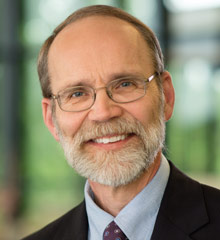Commentary on Hebrews 1:1-4; 2:5-12
This week’s second lesson begins a series of readings from the Epistle to the Hebrews.
Preachers do well to recognize that Hebrews itself is not only a possible basis for a sermon. Hebrews actually is a sermon. To be sure, it is frequently called an epistle or letter because of the final verses of Hebrews 13. But the opening lines of Hebrews 1, which are part of this week’s reading, have little in common with the other New Testament letters.
Where ancient letters begin by identifying the author, intended recipients, and offering a greeting, Hebrews begins with eloquent and intricately woven lines that are designed to capture the imagination of the hearers. The author says nothing about his own identity, and no amount of scholarly research has been able to overcome the anonymity. As Origen said, the identity of the person who wrote Hebrews is known to God alone.
The opening lines focus instead on how God has spoken in the past through the prophets and again in a singular way through the Son. There are no initial humorous anecdotes or ruminations about the lectionary. Instead, listeners are brought directly to an encounter with the God who speaks. And that intense focus raises questions as to why the writer starts there. Why was that focus on the God who speaks so important for the listeners?
We get glimpses of the situation of the listeners from comments scattered throughout the book. In terms of a congregational profile, the group had apparently been a rather successful new mission start. At first they had received the gospel message with excitement. The work of the Spirit among them seemed unmistakable. Their worship and life together was full of vitality (Hebrews 2:3-4). Problems arose when that led to friction with people outside the community, who apparently found this enthusiastic group of worshipers too peculiar to fit into the conventional social order.
After all, there were plenty of traditional religious options in most ancient cities, and that made this new focus on Jesus a source of suspicion and controversy. There were threats against the Christian group and some of them were arrested, but the others remained supportive. So in the face of hardship the congregation rallied — at least for a while (Hebrews 10:32-34).
But over time a malaise set in. The real crisis was one of apathy. Some simply drifted away. When asked why they no longer came to worship, they replied that they simply forgot or did not feel like it. The writer describes it as “neglect” (Hebrews 10:25). The gospel seemed promising at one point, but over time the actual experience of life in Christian community seemed to fall far short of the kingdom of God. For many contemporary congregations that is also the case.
So how does Hebrews go about revitalization? The opening lines take listeners back to where it all began: to God’s message. The prose draws the hearers out of the grayness and into the radiance of the divine presence. The opening lines (Hebrews 1:1-4) have sometimes been described as a hymn because of the poetry, and that is actually very helpful for preaching.
When you think of the hymns that most inspire members of your congregation, what are they? How have the hymnwriters shaped their language to engage the imagination? How do the melodies that support the words touch the heart? Preachers who reflect on how a powerful hymn can inspire a congregation will have a good feel for where Hebrews begins.
In terms of content, the opening lines follow the kind of sweep that we find in the prologue to John’s gospel (John 1:1-18) or the Christ hymn in Philippians (Philippians 2:6-11). It identifies Christ as the one who bears the stamp of God’s very being, who is God’s agent of creation, who made purification for sins by his death, and is the one through whom God’s lordship is exercised. The language of the Nicene Creed continues to give these ideas expression in worship, and that too is helpful in understanding the function of Hebrews’ introduction. Like a hymn and like the creed, it brings to expression the faith of the community.
When the writer comes to Hebrews 2, he links this inspiring confession of faith to the rather uninspiring situation of the community. He does so on the basis of Psalm 8 (Hebrews 2:6-8a). The Psalm declares that God created people for glory and honor, making them little lower than the angels and entrusting them with responsibility for the world. But then the author acknowledges that at present we do not “see” things that way. God may intend people to have glory and honor, but you certainly wouldn’t know that by looking at the dispiriting situation of the Christian community. Their experiences of conflict and marginalization, along with the current malaise, seemed anything but glorious.
But then the author returns to the gospel message. The listeners have already heard the hymn about the lordship of Christ, but at the center of that is the fact that Christ’s pathway was one of dishonor and suffering (Hebrews 2:8b-12). It was not a triumphant move from glory to glory. The writer has people recall that Christ did not escape suffering but entered fully into the situation of those who suffer. And the goal was to make a way forward through suffering in the confidence that God’s will for them was ultimately life.
Hebrews pictures Christ as a pioneer, as one who charts the course through the difficult landscape in order that others may follow. The pioneer endures hardship for the sake of something far greater. Hebrews will repeatedly declare that God’s purposes remain clear and firm. God has created people for glory, not dishonor, for life and not suffering. And in Christ the listeners “see” how God continues to be at work bringing his purposes to fulfillment.
Like the people whom God delivered from slavery in Egypt, they are on a journey through a wilderness — in the case of the readers it is a social wilderness. But the promised land still beckons, and the conviction that God has a future for them gives courage to persevere, knowing that God is not done but is leading them toward that promised future.


October 7, 2018